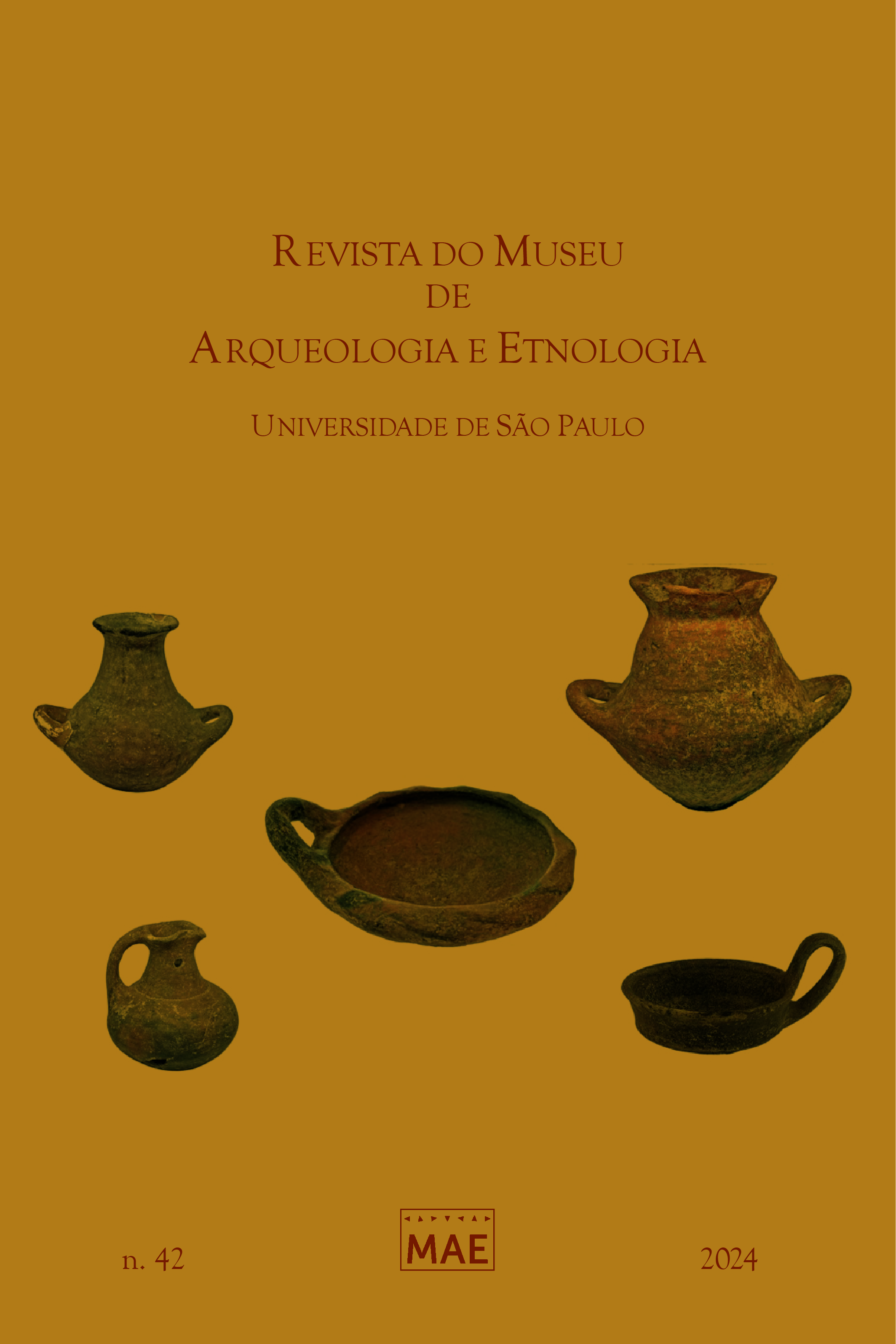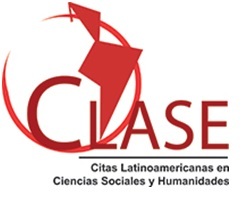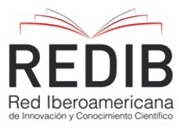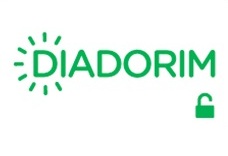Os asnos no período paleoassírio: animais indispensáveis à vida do mercador e ao funcionamento do comércio (Mesopotâmia, Idade do Bronze Médio)
DOI:
https://doi.org/10.11606/issn.2448-1750.revmae.2024.214400Palavras-chave:
Período Paleoassírio, Asnos, Comércio inter-regional, Aššur, KanešResumo
No início do II milênio AEC, o chamado período paleoassírio, a cidade de Aššur, no norte da Mesopotâmia, destacou-se como uma potência dentro de uma extensa rede de comércio de longa distância. Centenas de mercadores assírios e membros de suas famílias se aventuraram nas longínquas terras anatólias, sendo Kaneš seu principal destino, para comercializar estanho e tecido, e algumas vezes cobre e lã, em troca de metais preciosos como ouro e prata. O sucesso dessa empreitada em muito se deve ao uso dos asnos como animais de carga, que, organizados em caravanas, partiam da Mesopotâmia algumas vezes ao ano com destino a Anatólia central, onde tornar-se-iam, eles também, posteriormente mercadorias. O objetivo deste artigo é apresentar, por um lado, a importância fundamental dos asnos na organização do comércio de longa distância e, por outro, todo o trabalho envolvido em torno da seleção e cuidado deste animal. Para isso, propomos realizar uma revisão bibliográfica a partir do debate com a literatura existente em cotejo com a documentação encontrada no arquivo de um mercador assírio de nome Elamma. O trabalho com a documentação cuneiforme deste arquivo nos serve como estudo de caso e permitirá dimensionar a extensão da presença desses animais na vida de um mercador.
Downloads
Referências
Abreviações
ARM 26/2 = Charpin, D. Et al. 1988. Archives Royales de Maris 26. Archives Épistolaires de Mari I/2. Éditions Recherche sur le Civilisations, Paris.
BIN 6 = Stephens, F.J. 1944. Old Assyrian Letters and Business Documents. Babylonian lnscriptions in the Collection of J. B. Nies. Yale University Press, New Haven.
CCT 3 = Smith, S. 1915. Cuneiform Texts from Cappadocian Tablets in the British Museum. Oxford University Press, Londres.
GOA = Kouwenberg, N.J.C. 2017. A Grammar of Old Assyrian: Handbook of Oriental Studies. Brill, Leiden.
Kt c/k = tabletes provenientes das escavações do kārum Kaneš no ano de 1950.
Kt k/k = tabletes provenientes das escavações do kārum Kaneš no ano de de 1959.
Kt m/k = tabletes provenientes das escavações do kārum Kaneš no ano de 1961.
KKS = Matouš, L.; Matoušová-Rajmová, M. 1984. Kappadokische Keilschrifttafeln mit Siegeln: aus den Sammlungen der Karlsuniversittä in Prag. Karlsuniversittä in Prag, Praga.
KT 8 = Veenhof, K.R. 2017. The Archive of Elamma, son of Iddin-Suen, and his Family (Kt. 91/k 285-568 and Kt. 92/k 94-187). Kültepe Tabletleri VIII. Türk Tarih Kurumu, Ankara.
Praga I = tabletes salvaguardados na coleção da Charles Univeristy, Praga, República Tcheca.
TCL 14 = Thureau-Dangin, F. 1928. Tablettes Cappadociennes du Louvre II. Librairie Orientaliste Paul Geuthner, Paris.
TCL 19 = Lewy, J. 1935. Tablettes Cappadociennes du Louvre III.1. Librairie Orientaliste Paul Geuthner, Paris.
VS 26 = Veenhof, K.; Klengel-Brandt, E. 1992. Altassyrisch Tontafeln aus Kültepe. Text und Siegelabrollungen. Vorderasiatische Schriftdenkmäler der (Königlichen) Museen zu Berlin.
Bibliografia
Altaweel, M.; Squitieri, A. 2018. Revolutionizing a World: From Small States to Universalism in the Pre-Islamic Near East. UCL Press, Londres.
Barjamovic, G. 2011. A Historical Geography of Anatolia in the Old Assyrian Colony Period. Museum Tusculanum Press, Copenhague.
Barjamovic, G. 2018. Interlocking commercial networks and the infrastructure of trade in western Asia during the Bronze Age. In: Kristiansen, K., Lindkvist, T. & Myrdal, J. (Eds.) Trade and Civilization in the Pre-Modern World. Cambridge University Press, Cambridge, 133–167.
Barjamovic, G. 2022.Before the Kingdom of the Hittites. Anatolia in the Middle Bronze Age. In: Radner, K., Moeller, N. & Potts, D. (Eds.). The Oxford History of the Ancient Near East. Oxford University Press, Oxford, 497-565.
Barjamovic, G.; Hertel, T.; Larsen, M. 2012. Ups and Downs at Kanesh. Chronology, History and Society in the Old Assyrian Period. PIHANS 120. Nederlands Instituut Voor Het Nabije Oosten, Leiden.
Beja-Pereira, A. et al. 2004. African origins of the domestic donkey. Science 304: 1781.
Cattani, M.; Bokonyi, S. 2002. Ash-Shumah. An early Holocene settlement of desert hunters and mangrove foragers in the Yemeni Tihama. In: Cleuziou, S., Tosi, M., Zarins, J. (Eds.). Essays on the Late Prehistory of the Arabian Peninsula. Serie Orientale Romana XCIII. Istituto Italiano per l’Africa e l’Oriente, Roma, 31-53.
Dercksen, J.G. 2004a. Old Assyrian Institutions. MOS Studies 4. Pihans 98. Nederlands Instituut voor het Nabije Oosten, Leiden.
Dercksen, J.G. 2004b. Old Assyrian uthurum “characteristic, mark” and lū uthurum “it surely was a sign”. NABU, 8-9.
Dercksen, J.G. 2022. The Golden Interval of Old Assyrian Tarde (2000-1700BC). In: Warburton, D. (Ed.). The Earliest Economic Growth in World History. Proceedings to Berlin Workshop. Peeters, Leuven, 75-104.
Gates, M-H. 1994. Archeology in Turkey. American Journal of Archaeology 98, 2, 249-278.
Goulder, J. 2020. Working Donkeys in 4th-3rd Millennium BC Mesopotamia: Insights from Modern Development Studies. Routledge, Londres.
Goulder, J. 2021. Face to face with working donkeys in Mesopotamia: insights from modern development studies. In: Recht, L.; Tsouparopoulou, C. (Ed.). Fierce lions, angry mice and fat-tailed sheep: Animas encounters in the Ancient Near East. McDonald Institute for Archaeological Research, 249-262. DOI https://doi.org/10.17863/CAM.76169
Horden, P.; Purcell, N. 2010. The Corrupting Sea: A Study of Mediterranean History. Wiley-Blackwell, Nova Jersey.
Kimura, B. et al. 2011. Ancient DNA from Nubian and Somali wild ass provides insights into donkey ancestry and domestication. Proceedings of the Royal Biological Sciences 278: 50–57.
Kulakoğlu, F.; Kangal, S. 2010. Anatolia’s Prologue: Kültepe Kanesh Karum, Assyrians in Istanbul. Kayseri Metropolitan Municipality Cultural, Istambul.
Lafont, B. 2000. Cheval, âne, onagre et mule dans la haute histoire mésopotamienne : quelques données nouvelles. In: Parayre, D. (Ed.), Les animaux et les hommes dans le monde syro-mésopotamien aux époques historiques, Topoi Orient–Occident, Supplément 2. Maison de l’Orient et de la Méditerranée Jean Pouilloux, Lyon, 207-221.
Larsen, M.T. 1967. The Old Assyrian Caravan Procedure. Nederlands Instituut voor het Nabije Oosten, Istambul.
Larsen, M.T. 2015. Ancient Kanesh: A Merchant Colony in Bronze Age Anatolia. Cambridge University Press, Cambridge.
Lewy, J. 1956. On Some Institutions of the Old Assyrian Empire. Hebrew Union College Annual 27: 1-79.
Mellink, M.J. 1993. Archeology in Anatolia. American Journal of Archaeology 97, 1. 105-133.
Michel. C. 2001. Correspondance des marchands de Kaniš au début du IIe millénaire avant J.-C. LAPO, 19. Les Éditions du CERF, Paris.
Michel, C. 2003. The perdum-mule, a mount for distinguished persons in Mesopotamia during the first half of the second millennium BC. PECUS. Man and animal in antiquity: Proceedings of the conference at the Swedish Institute in Rome, September 9-12, 2002. Swedish Institute, Rome, 191-200.
Michel, C. 2008. Les pérégrinations des marchands assyriens en haute Mésopotamie et en Asie Mineure. Res Antiquae 5: 371-388.
Michel, C. 2011. The Kārum Period on the Plateau. In: Steadman, S.R.; McMahon, G. (Eds.). The Oxford Handbook of Ancient Anatolia: (10,000-323 BCE). OUP, Oxford, 313-336.
Michel, C. 2018. Constitution, Contents, Filing and Use of Private Archives. In: Kienitz, S.; Friedrich, M.; Brockmann, C. (Eds.). Manuscripts and Archives: Comparative Views on Record-Keeping. De Gruyter, 43-70.
Michel, C.; Veenhof, K. 2010. The Textiles Traded by the Assyrians in Anatolia (19th-18th Centuries BC). In: Michel, C.; Nosch, M-L. (Eds.). Textile Terminologies in the Ancient Near East and Mediterranean from the Third to the First Millennia BC. Ancient Textile Series 8. Oxbow Books, Oxford, 210-271.
Mitchell, P. 2018. The Donkey in Human History: An Archaeological Perspective. Oxford University Press, Oxford.
Nashef, K. 1987. Rekonstruktion der Reiserouten zur Zeit der altassyrischen Handelsniederlassungen. Ludwig Reichert Verlag, Wiesbaden.
Orlando, L. 2021. Au-delà de nous, nos animaux domestiques. In: Orlando, L. L’ADN fossile, une machine à remonter le temps: les tests ADN en archéologie. Odiel Jacob, Paris, 137-150.
Özgüç, N. 1953. Vorbericht über die Siegel und Siegelabdrücke. Belleten Türk Tarih Kurumu 17/65: 123-127.
Özgüç, N. 1965. The Anatolian Group of Cylinder Seal Impressions from Kültepe: Kültepe mühür baskilarinda Anadolu grubu. TTK, Ankara.
Palmisano, A. 2018. The Geography of Trade. Landscapes of competition and long-distance contacts in Mesopotamia and Anatolia in the Old Assyrian Colony Period. Archaeopress, Oxford.
Rossel, S. et al. 2008 Domestication of the donkey: Timing, processes, and indicators. Proceedings of the National Academy Sciences 105: 3715–3720.
Shammas, A. 2009. Arabesques. Babel, Paris.
Sherrat, A. 1981. Plough and pastoralism: aspects of the Secondary Products Revolution. In: Hodder, I.; Isaac, G.; Hammond, N. (Eds.). Pattern of the Past: Studies in the Honour of David Clarke. Cambridge University Press, Cambridge, 261-306.
Steadman, S.R.; McMahon, G. (Eds.). 2011. The Oxford Handbook of Ancient Anatolia: (10,000-323 BCE). OUP, Oxford, 313-336.
Stratford, E. 2019. Markets and Marketplaces in Middle Bronze Age Anatolia particularly during the ‘Colony’ Period. In: Rahmstorf, L & Stratford, E. (Eds.). Weights and Marketplaces from the Bronze Age to the Early Modern Period. Weight and Value; Wachholtz Verlag Kiel, Hamburg, 219-236.
Thavapalan, S. 2020. The Meaning of Color in Ancient Mesopotamia: Culture and History of the Ancient Near East. Volume: 104. Brill, Leiden.
Todd, E. et al. 2022. The genomic history and global expansion of domestic donkeys. Science 377: 1172-1180.
Veenhof, K.R. 1972. Aspects of Old Assyrian Trade and its Terminology: Studia et Documenta ad Iura Orientis Antiqui Pertinenta X. Brill, Leiden.
Veenhof, K.R. 2017. The Archive of Elamma, son of Iddin-Suen, and his Family (Kt. 91/k 285-568 and Kt. 92/k 94-187). Kültepe Tabletleri VIII. Türk Tarih Kurumu, Ankara.
Veenhof, K.R. 2021. Chroniques Bibliographiques 24. Kültepe Texts: 1999-2010-2020 – Part 2. RA, 115, 175-202.
Veenhof, K.; Eidem, J. 2008. Mesopotamia: The Old Assyrian Period. Academic Press Fribourg, Fribourg.
Wang, C. et al. 2020. Donkey genomes provide new insights into domestication and selection for coat color. Nature Communications 11/6014. DOI https://doi.org/10.1038/s41467-020-19813-7
Yilmaz, O. 2012. Domesticated Donkey. Veni Vidi Vici Publications, Ankara.
Yousef, M.K.; Dill, D.B.; Freeland, D.V. 1972. Energetic cost of grade walking in man and burro, Equus asinus: Desert and mountain. Journal of Applied Physiology 33: 337-340.
Zarins, J. 1978. The domesticated Equidae of third millennium B.C. Mesopotamia. Journal of Cuneiform Studies 30: 3-17.
Zarins, J. 2014. The Domestication of Equidae in Third-Millennium BCE Mesopotamia. CDL Press, Bethesda.
Downloads
Publicado
Edição
Seção
Licença
Copyright (c) 2024 Anita Fattori

Este trabalho está licenciado sob uma licença Creative Commons Attribution-NonCommercial-NoDerivatives 4.0 International License.


















